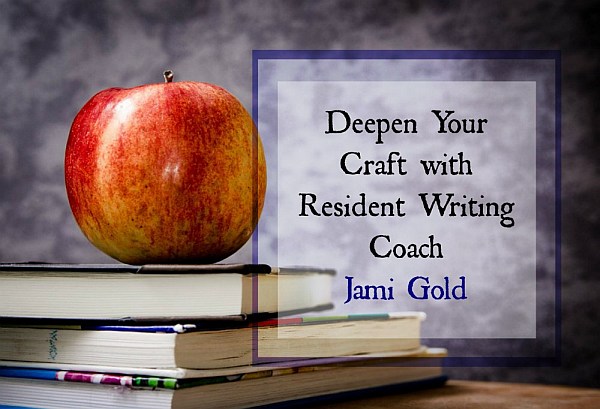How to Bridge the Gap in Your Story’s Momentum

It’s time for another one of my guest posts over at Angela Ackerman and Becca Puglisi’s Writers Helping Writers site. As one of their Resident Writing Coaches, I’ve previously shared:
- insights on how to approach an overwhelming revision
- how to increase the stakes (the consequences for failure) in our story
- 7 ways to indicate time passage in our stories (and 2 issues to watch out for)
- how to translate story beats to any genre
- how and why we should avoid episodic writing
- how to find and fix unintended themes
- how “plot” holes can sneak into our characters and worldbuilding
- how TV shows can help us learn to hook our readers
- what we can learn from stories that successfully break the rules
- how to ensure revisions aren’t creating rips in our story
- how to create strong story goals that won’t slow our pacing
- how to keep readers supportive through our characters’ changes
I was due to submit another WHW coaching guest post last month, but as that deadline fell shortly after my house flooded, Angela and Becca were kind enough to let me reschedule to this week. As a bonus, the delay also gave me a great post idea for this time around. *smile*
With this turn for another coaching article at WHW, I’m following up my post last week about passive vs. active characters with a look at how we can kickstart our story’s momentum before the main conflict is revealed. Bridging conflict can help us when our story premise delays the main conflict or when our character naturally starts off more passive. Let’s take a look…
Why Might We Need to Use Bridging Conflict?
As I mentioned last week, one of the most common reasons for passive or reactive protagonists is that our story premise doesn’t let our character get involved with the main story problem right away. Characters with no goals and nothing to do will naturally be more passive.
Does your story have a slow start? Here's how to kick start the momentum... Click To TweetWe frequently encounter this type of premise in stories with thriller elements, such as when the villain is progressing on their bad-guy plans somewhere beyond the protagonist’s awareness (like in their secret lair). Our protagonist can’t start working against the villain if they don’t even know the villain or their plans exist.
In last week’s post, I shared ways to tweak our premise and accelerate the point where our protagonist can get involved in the story. But there’s another way of looking at the problem of un-involved protagonists: We can instead work outside the premise by adding bridging conflict.
When Does Conflict Qualify as Bridging Conflict?
Our stories are typically made up of many elements that evolve over the pages. Characters can have several goals that change as the situation demands, and along the way, they’ll encounter many, many obstacles, and so on.
The conflicts in our story work the same way, in that we can include multiple sources of conflict. In addition to our story’s main conflict, we often see conflict:
- between the protagonist and antagonists (which could be anything from the head minion, car trouble, or love interest),
- for each subplot or obstacle
- within characters and their emotional arc, such as their internal conflict,
- etc., etc.
In other words, we’re not limited to relying only on our story’s main conflict to kick off our story’s momentum. Other types of conflict can get our story going until the main conflict is ready to take up the reins of the narrative drive.
Whatever the style or source of conflict we use for this purpose, it’s called bridging conflict, as it bridges the gap between the first page and the point when the main conflict takes over the story’s momentum. As the story progresses, that conflict might turn into a subplot, or it might be resolved as a standalone obstacle (such as how many James Bond movies start off with a “bang” of conflict unrelated to the big bad guy of the rest of the film).
Bridging conflict is endlessly useful, so let’s dig deeper into how we can use it—and how we can make it even more powerful for our stories…
Writers Helping Writers: Resident Writing Coach Program
Build a Bridge: From Story Beginning to Main Conflict
Come join me at WHW above, where I’m sharing:
- how to tell when our story’s premise might call for bridging conflict
- how bridging conflict works with story structure and beats
- other ways bridging conflict strengthens our story
- how to tie bridging conflict to the main conflict (and why it’s often better for the story to do so)
- example of a premise that needs bridging conflict and more examples of how to use it
Can you think of stories that lack early momentum? Does it make sense how bridging conflict might help? Had you heard of bridging conflict before? Did you know how to use it? Have you thought about how and why to tie bridging conflict to the main conflict? (My WHW posts are limited in word count, but I’m happy to go deeper here if anyone wants more info. *smile*)
Pin It
Great follow-up. I think The Girl with the Dragon Tattoo that everyone raved had no momentum for well over a hundred pages. I never finished reading it so I don’t know if it was as good as everyone said it was.
Sorry to hear about your house flooding. We had a lot of horrendous rain in our area last year and our basement flooded at least five times. It didn’t ruin stuff but it ruined floors and walls and made one of the foundation walls lean in. Unfortunately, our insurance excluded flood damage so we have to pay out of pocket to get everything repaired.